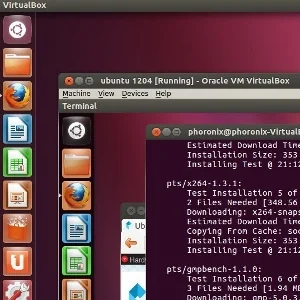VMware Still Trying To Push VMCI, VSOCK For Linux

Going back to May of last year, VMCI for the mainline Linux kernel was talked about by VMware as one of their interests. VMware has published the patches multiple times, but to date the code hasn't landed in the kernel nor its staging area.
In July of 2012 it looked like VMCI might be ready to enter the mainline tree. It turned out that the code wasn't ready to be merged due to comments by other kernel developers. In October was another mainline attempt for VMCI/VSOCK, but that too didn't bear any fruit.
With a new year now comes a new attempt by VMware to mainline the Virtual Machine Communication Interface and VMCI Sockets. While VMCI/VSOCK is designed around VMware's needs of their commercial virtualization software, the code they are trying to push is obviously all open-source and they're trying to push this code in order to improve the "out of the box" Linux experience for VMware customers -- similar to Microsoft pushing Hyper-V Linux drivers.
For those that don't remember what VMware VMCI is all about:
VMCI allows virtual machines to communicate with host kernel modules and the VMware hypervisors. User level applications both in a virtual machine and on the host can use vmw_vmci through VMCI Sockets, a socket address family designed to be compatible with UDP and TCP at the interface level. Today, VMCI and VMCI Sockets are used by the VMware shared folders (HGFS) and various VMware Tools components inside the guest for zero-config, network-less access to VMware host services. In addition to this, VMware's users are using VMCI Sockets for various applications, where network access of the virtual machine is restricted or non-existent. Examples of this are VMs communicating with device proxies for proprietary hardware running as host applications and automated testing of applications running within virtual machines.Fortunately, this time around with the latest revisions to the VMware patches, it looks like they will make it into the mainline tree. Greg Kroah-Hartman has already responded to the VMCI patch-set, "Nice work, thanks for the changes you've made over time, and for your persistence. I can't see anything else to complain about, so I've applied this to my tree and it will show up in linux-next tomorrow or so."
In a virtual machine, VMCI is exposed as a regular PCI device. The primary communication mechanisms supported are a point-to-point bidirectional transport based on a pair of memory-mapped queues, and asynchronous notifications in the form of datagrams and doorbells. These features are available to kernel level components such as HGFS and VMCI Sockets through the VMCI kernel API. In addition to this, the VMCI kernel API provides support for receiving events related to the state of the VMCI communication channels, and the virtual machine itself.
However, when it comes to the VSOCK patches, David Miller has not acknowledged them. "...what I remember doing was deferring to the feedback these folks received, stating that ideas that the virtio people had mentioned should be considered instead. So definitely NACK this code and any infrastructure you've merged which essentialy depends upon it." After VMware attempted to clarify the infrastructure situation that VSOCK is just built atop VMCI, Miller added, "I'd much rather see a hypervisor neutral solution than a hypervisor specific one which this certainly is."
The VMware answer there is that nothing is really hypervisor neutral. "Objectively speaking neither solution is hypervisor neutral as there are hypervisors that implement either VMCI or virtio or something else entirely. Our position is that VSOCK feature set is more complete and that it should be possible to use transports other than VMCI for VSOCK traffic, should interested parties implement them, and on this basis we ask to include VSOCK."
Those wanting to look at this VMware kernel code for upstreaming can find the six patches and comments on VSOCK in this thread while the twelve patches and comments for VMCI can be found in this thread.
Add A Comment

